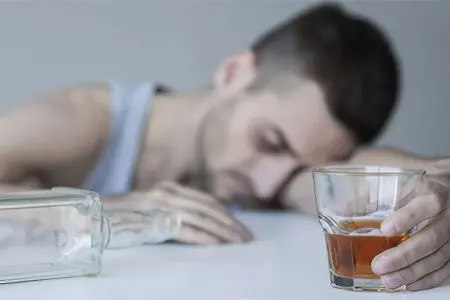Contents
The withdrawal syndrome – this is a complex of body reactions that occur in response to the cessation of intake (or with a decrease in dose) of a substance that can cause addiction. Withdrawal syndrome can develop when you refuse to take medications, narcotic substances, psychostimulants. It is possible to develop a complex of negative reactions even after a decrease in the dose of intake of a pathognomonic drug into the body.
Withdrawal symptoms can vary in severity, depending on the dose and duration of the substance, as well as on its composition and the effect that it had on the body. It is possible not only to return the negative reactions that, for example, the drug blocked, but their intensification and the appearance of qualitatively new undesirable phenomena.
Hormone withdrawal syndrome

Hormone withdrawal syndrome is a condition that is dangerous not only for health, but also for human life.
glucocorticoid withdrawal syndrome
Especially dangerous is glucocorticoid therapy, which should be carried out exclusively under medical supervision. Worsening of the symptoms of the disease to which hormonal therapy was directed is a frequent occurrence when the terms of treatment are not observed, as well as when the maximum allowable doses are exceeded.
As a rule, glucocorticoid withdrawal syndrome occurs only if the patient was self-medicating. Doctors have clear recommendations regarding the use of these hormonal drugs for the treatment of a particular disease. The severity of the glucocorticoid withdrawal syndrome depends on how well the adrenal cortex is preserved in the patient:
The mild course of the corticosteroid hormone withdrawal syndrome is manifested in the appearance of a feeling of weakness, malaise, increased fatigue. The person refuses to eat because he has no appetite. There may be muscle pain, exacerbation of the symptoms of the underlying disease and an increase in body temperature.
The severe course of corticosteroid hormone withdrawal syndrome is manifested in the development of the Addisonian crisis. Emergence of vomiting, spasms, a collapse is possible. If you do not enter the next dose of hormones to the patient, then there is a risk of death.
In this regard, therapy with glucocorticosteroid hormones is recognized by doctors as difficult and dangerous, despite all the achievements of modern medicine. Doctors say that such treatment is easier to start than to complete. Nevertheless, competent drawing up of a regimen for taking drugs of this group increases its safety for the patient’s health. Before starting therapy, all possible contraindications, side effects of taking hormonal drugs must be taken into account without fail. It is equally important to plan a “cover” scheme for people at risk, for example, switching from glucocorticoids to insulin in diabetes mellitus, the possibility of using antibiotics in the treatment of chronic foci of infection with hormones, etc.
Hormonal contraceptive withdrawal syndrome
With the abolition of hormonal contraceptives, there is an increase in the production of luteinizing and follicle-stimulating hormones in the body. In gynecology, such a hormonal surge is called the “rebound effect”, which is often used to treat infertility.
After three months of taking oral contraceptives, their cancellation without fail will begin to stimulate ovulation and the release of the female body’s own hormones. It is not excluded a change in the length of the cycle, or a delay in menstruation for several cycles, which occurs infrequently.
In any case, a gynecologist should help choose oral contraceptives after a full examination. If, against the background of the withdrawal of these drugs, a woman notices any undesirable symptoms in herself, an appeal to a specialist is mandatory.
Antidepressant withdrawal syndrome

Antidepressants are drugs that are used to relieve a person of depression. They have a lot of positive effects, their widespread use in psychiatric practice is fully justified. Medicines in this group can improve the prognosis of people with severe depression, and also make it possible to reduce the number of suicides.
However, antidepressant withdrawal syndrome is a complex condition that requires medical supervision and correction. Most often, this syndrome occurs with an unprofessional approach to drawing up a treatment regimen with drugs of this group. Indeed, today only the lazy one does not relieve depression – these are all kinds of coach trainers, and educational psychologists, and traditional healers, and sorcerers and many other gurus of the human psyche. It is important to remember that if you experience symptoms of depression, you should only contact a psychiatrist or psychologist. Only they are able to prescribe adequate antidepressant therapy and choose a regimen so that there is no withdrawal syndrome after stopping treatment.
Antidepressant withdrawal syndrome threatens with the development of the following conditions:
Increased sleepiness.
The occurrence of muscle weakness.
Inhibition of reactions.
Hand tremor.
Loss of coordination, unsteady gait.
Speech disorders.
Urinary incontinence.
Decreased libido.
Increased depression.
Dizziness.
Violation of night rest.
Noise in ears.
Exacerbation of sensitivity to sounds, smells and other external stimuli.
In addition to the above physiological disorders, the main goal – getting rid of depression, will not be achieved. On the contrary, the withdrawal syndrome can lead to a disorder in the perception of reality and an increase in depressive moods.
alcohol withdrawal syndrome

Alcohol withdrawal syndrome is a complex pathological reaction of the body that occurs in people suffering from alcohol dependence after refusing to drink alcohol.
The withdrawal syndrome may resemble a hangover, but it is longer in time and has a number of additional features. Alcohol withdrawal will never develop in a person who does not have alcohol dependence. It is not enough to drink alcohol for a week to subsequently develop a withdrawal syndrome. The period of time that is necessary for the formation of alcohol dependence varies between 2 and 15 years. At a young age, this period is reduced to 1-3 years.
Most often, three degrees of severity of alcohol withdrawal syndrome are distinguished, which are characteristic of stage 2 alcoholism:
First degree alcohol withdrawal syndrome can be observed after short bouts of 2-3 days. At the same time, a person experiences an increase in heartbeat, suffers from excessive sweating, and dryness appears in the mouth. There are signs of asthenic syndrome with increased fatigue, weakness, sleep disturbances and autonomic disorders (tachycardia, local hyperhidrosis, deterioration of potency).
Second degree alcohol withdrawal syndrome occurs after prolonged binges for a period of 3-10 days. Neurological symptoms, as well as problems in the functioning of internal organs, join vegetative disorders. The following clinical manifestations are possible: hyperemia of the skin, redness of the eyes, increased heart rate, jumps in blood pressure, nausea accompanied by vomiting, heaviness in the head, clouding of consciousness, tremor of the limbs, tongue, eyelids, gait disturbance.
Third degree withdrawal syndrome occurs after binges, the duration of which is more than a week. In addition to somatic and vegetative disorders, psychological disorders are observed, which in this case come to the fore. The patient suffers from sleep disorders, suffers from nightmares, which are often very real. The state of a person is disturbed, he suffers from feelings of guilt, is in a dreary and depressed mood. Behaves aggressively towards other people.
It is also possible to attach symptoms that are associated with the functioning of internal organs, since prolonged alcohol intake affects their condition in a negative way.
The resumption of alcohol intake softens or completely eliminates the withdrawal syndrome. The subsequent refusal leads to an increase in the clinic of the syndrome, and also makes the craving for alcohol even more irresistible.
Treatment of alcohol withdrawal syndrome is within the competence of a narcologist. Patients with a mild form of the course of disorders can receive care at home or in an outpatient setting. Hospitalization is necessary in case of exhaustion, dehydration, fever, body temperature, severe tremor of the limbs, the development of hallucinations, etc. Mental disorders in the form of schizophrenia, alcoholic depression and manic-depressive psychosis are also dangerous.
In mild cases, alcohol withdrawal syndrome resolves on its own, on average, after 10 days. The course of severe abstinence depends on the severity of somatic pathology, mental and autonomic disorders.
nicotine withdrawal syndrome

Nicotine withdrawal syndrome occurs when a person quits smoking. The process of complete cleansing of the body lasts for 3 months and is called nicotine detoxification.
Quitting smoking leads not only to psychological, but also to physiological suffering and is manifested in the following symptoms:
There is a strong desire to smoke a cigarette.
A person experiences a feeling of tension, irritation, is able to show unreasonable aggression.
It is not excluded the development of depression, the emergence of feelings of anxiety and anxiety.
Concentration suffers.
Night sleep is disturbed.
There may be a feeling of nausea, the addition of chills and dizziness.
The heartbeat becomes more frequent, shortness of breath, sweating increase. People complain that they do not have enough air.
The degree of severity of nicotine withdrawal syndrome depends on the individual characteristics of a person, on his character, on the time of existence of a bad habit. Sometimes, in an effort to cope with the feeling of psychological discomfort, people begin to eat more, thereby suppressing the desire to smoke a cigarette. This can lead to weight gain. Therefore, the diet should be planned correctly, and substitute foods should not be chosen with calories. It is best if it is fruits or vegetables.
Withdrawal occurs about an hour after nicotine does not enter the bloodstream. This is expressed in the desire to smoke a new cigarette. It is not too strong in the initial stages, but quite intrusive. The feeling of discomfort gradually increases, after 8 hours irritability, anxiety increase, difficulties with concentration join. The peak of nicotine withdrawal syndrome is gaining on the third day after quitting smoking. After this time, a gradual weakening of traction and an improvement in the condition begins. After a month, unwanted symptoms are minimized, although the urge to smoke a cigarette may remain for a long time.
To alleviate your own condition, you need to be able to be distracted. To do this, it is enough to find some interesting activity that allows you not to concentrate on thoughts about a cigarette. Experts recommend following a drinking regimen, breathing deeper, playing sports, spending more time outdoors.
It is important that the people around were sympathetic to the decision of a person to get rid of a bad habit and did not stimulate him to smoke again. To alleviate the symptoms of nicotine withdrawal, various patches can be used, or the use of nicotinic receptor antagonists. However, before using any aid, you should consult a specialist.









